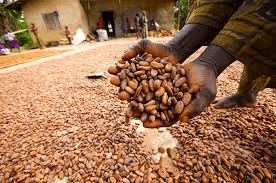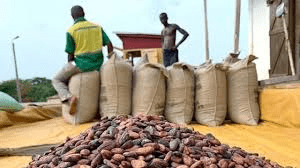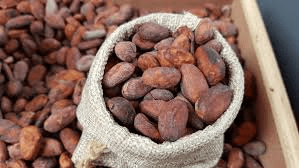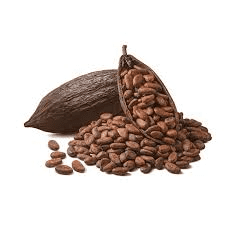Cocoa beans are the primary ingredient for making chocolate and other cocoa products. The process of transforming cocoa beans from raw harvest to export-ready products involves several steps. This guide will help you understand how to process, package, and export cocoa beans effectively.
The first step in processing cocoa beans is harvesting. Farmers pick ripe cocoa pods from the trees, then split them open to remove the beans. The beans, covered in a sticky pulp, are placed in boxes or heaps and left to ferment for several days. This fermentation process is crucial as it develops the beans’ flavor and reduces bitterness.
After fermentation, the beans need to be dried. They are spread out in the sun on drying racks or mats, where they are regularly turned to ensure even drying. Proper drying is essential to prevent mold growth and prepare the beans for storage and transport.
Once dried, the beans are sorted and graded based on quality. Defective beans are removed, and the remaining ones are cleaned to remove any debris.
The next step is packaging. The beans are packed in jute or burlap sacks, which allow air to circulate and prevent moisture build-up. These sacks are typically labeled with important information such as the origin, grade, and weight of the beans.
The beans are ready for export. They are transported to shipping ports and loaded onto ships bound for various international destinations. Proper documentation, including export licenses and quality certificates, must accompany the shipment to ensure smooth customs clearance.
How to Process Cocoa Beans for Exportation

1. Harvesting: Cocoa beans are harvested from ripe cocoa pods, which are cut from the cocoa tree using a machete. Each pod contains 20-50 cocoa beans.
2. Fermentation: The beans are removed from the pods and placed in shallow containers, such as wooden boxes, to ferment. This process lasts 5-7 days and helps develop the beans’ flavor.
3. Drying: After fermentation, the beans are spread out in the sun to dry for about 5-10 days. Drying reduces moisture content to around 7%, preventing mold growth.
4. Sorting: Beans are sorted to remove debris, damaged beans, and foreign materials. This ensures only high-quality beans are processed further.
5. Roasting: Beans are roasted to enhance their flavor. Roasting times and temperatures vary, typically ranging from 250-350°F for 30 minutes to 2 hours.
6. Cracking and Winnowing: Beans are cracked open to separate the nibs from the shells. Winnowing removes the shells, leaving pure cocoa nibs.
7. Grinding: Nibs are ground into cocoa mass (also called cocoa liquor), which can be further processed into cocoa butter and cocoa powder.
8. Tempering: The cocoa mass is tempered to stabilize it, ensuring a smooth texture and preventing bloom (fat crystallization).
9. Molding and Cooling: The tempered cocoa is poured into molds and cooled to form solid blocks or other shapes, ready for packaging.
10. Packaging: The processed cocoa is packaged in moisture-proof bags or containers to maintain quality during storage and transport.
How to Package Cocoa Beans for Exportation
1. Quality Inspection: Inspect beans for quality and remove any defective beans. Only high-quality beans should be packaged for export.
2. Cleaning: Clean the beans to remove any remaining debris or dust. This can be done using air blowers or mechanical cleaners.
3. Weighing: Weigh the beans accurately to ensure that each package meets the required export weight standards.
4. Bagging: Place the beans in burlap or jute bags, which are breathable and help prevent mold growth. Each bag typically holds 60-65 kg of beans.
5. Labeling: Clearly label each bag with information such as the batch number, origin, weight, and date of packaging.
6. Sealing: Seal the bags securely to prevent spillage and contamination during transport.
7. Storage: Store the bags in a cool, dry place away from direct sunlight and moisture until they are ready for shipment.
8. Palletizing: Arrange the bags on pallets for easier handling and transport. Use shrink wrap to secure the bags on the pallets.
9. Documentation: Prepare the necessary export documents, including invoices, certificates of origin, and phytosanitary certificates.
10. Loading: Load the pallets onto shipping containers, ensuring they are stacked securely to prevent movement during transit.
Read Also : Methods of Crop Improvement and Production of Hybrid Seed
How to Export Cocoa Beans for Profits

1. Market Research: Conduct research to identify potential markets and understand the demand for cocoa beans in different regions.
2. Licensing: Obtain the necessary export licenses and permits required by your country and the importing country.
3. Quality Assurance: Ensure that your beans meet the quality standards of the importing country. This may involve obtaining certifications such as Fair Trade or organic certification.
4. Pricing: Set competitive prices for your cocoa beans, taking into account production costs, market rates, and profit margins.
5. Contracts: Establish contracts with buyers, detailing the terms of sale, quality standards, delivery schedules, and payment terms.
6. Logistics: Arrange for transportation, including selecting reliable shipping companies and determining the most cost-effective shipping routes.
7. Insurance: Purchase insurance to cover the cocoa beans during transit, protecting against potential losses or damages.
8. Customs Clearance: Work with customs brokers to ensure that all necessary documentation is prepared and that your shipment clears customs smoothly.
9. Payment: Use secure payment methods such as letters of credit or bank transfers to ensure timely and reliable payments from buyers.
10. Follow-Up: Maintain good relationships with your buyers by following up on shipments, addressing any issues promptly, and ensuring customer satisfaction.
Read Also : Six (6) Factors Affecting Mechanized Harvesting Of Field Crops
Frequently Asked Questions (FAQ’s) About Cocoa Beans

1. What are cocoa beans?
Cocoa beans are the seeds of the cocoa tree (Theobroma cacao), used to produce cocoa mass, cocoa butter, and chocolate.
2. Where are cocoa beans grown?
Cocoa beans are primarily grown in tropical regions, with major producers including Ivory Coast, Ghana, Nigeria, and Indonesia.
3. How long does it take for a cocoa tree to produce beans?
It takes about 3-5 years for a cocoa tree to mature and start producing beans.
4. What is the importance of fermentation in cocoa processing?
Fermentation is crucial for developing the flavor of the cocoa beans and reducing bitterness.
5. How are cocoa beans dried?
Cocoa beans are typically sun-dried by spreading them out on mats or drying tables for about 5-10 days.
6. What is the shelf life of dried cocoa beans?
Properly dried and stored cocoa beans can have a shelf life of up to 2 years.
7. What are the main products derived from cocoa beans?
The main products are cocoa mass (liquor), cocoa butter, and cocoa powder.
8. What certifications are important for exporting cocoa beans?
Certifications like Fair Trade, organic, and Rainforest Alliance are important for accessing premium markets and meeting buyer requirements.
9. How can I ensure the quality of cocoa beans for export?
Ensure proper fermentation, drying, and storage. Conduct regular quality inspections and obtain necessary certifications.
10. What are common challenges in cocoa bean exportation?
Common challenges include fluctuating market prices, pests and diseases, transportation issues, and meeting international quality standards.
Read Also : Green Waste Complete Management Guide

